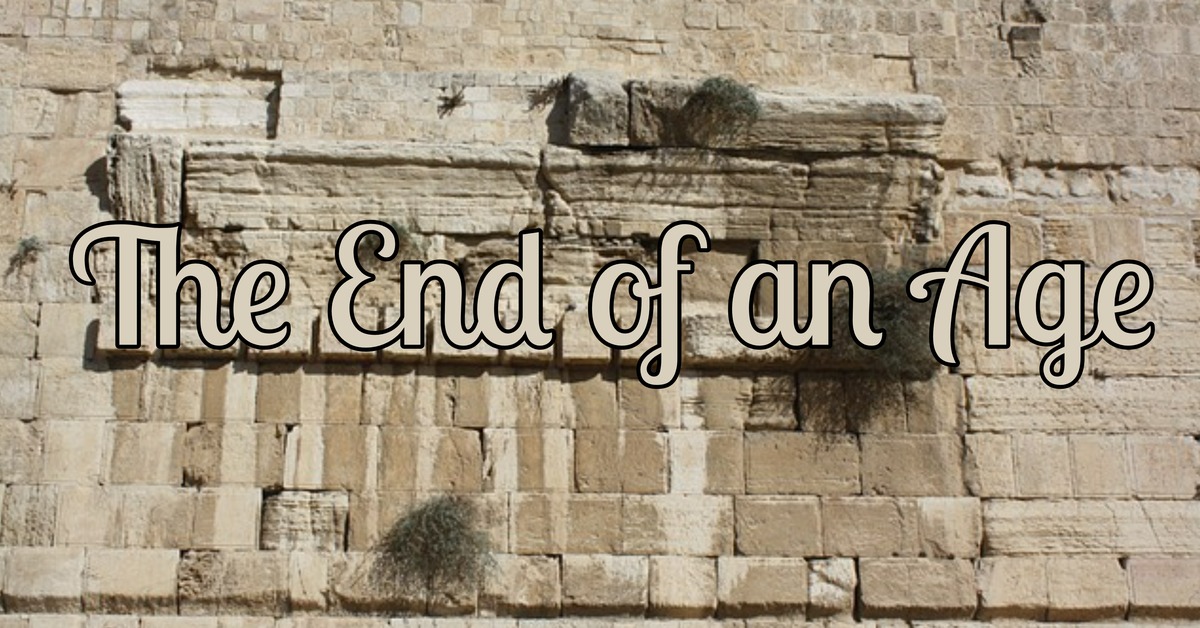Jesus left the temple and was going away, when his disciples came to point out to him the buildings of the temple. But he answered them, “You see all these, do you not? Truly, I say to you, there will not be left here one stone upon another that will not be thrown down.”
As he sat on the Mount of Olives, the disciples came to him privately, saying, “Tell us, when will these things be, and what will be the sign of your coming and of the end of the age?” And Jesus answered them, “See that no one leads you astray. For many will come in my name, saying, ‘I am the Christ,’ and they will lead many astray. And you will hear of wars and rumors of wars. See that you are not alarmed, for this must take place, but the end is not yet. For nation will rise against nation, and kingdom against kingdom, and there will be famines and earthquakes in various places. All these are but the beginning of the birth pains.
“Then they will deliver you up to tribulation and put you to death, and you will be hated by all nations for my name’s sake. And then many will fall away and betray one another and hate one another. And many false prophets will arise and lead many astray. And because lawlessness will be increased, the love of many will grow cold. But the one who endures to the end will be saved. And this gospel of the kingdom will be proclaimed throughout the whole world as a testimony to all nations, and then the end will come.
Understanding And Applying the Text
Chapters 24 and 25 are the last of Jesus’ five great discourses. This one is called the “Olivet discourse.” That is because most of it is set on the Mount of Olives. Mark records it as well.
There are three ways theologians have interpreted this passage. First, all or most of chapter 24 deals with the destruction of Jerusalem and the “coming” of the Son of Man. And then the exaltation of Jesus in heaven.
The second interpretation is all the sermon is about Christ’s second coming. And He comes in judgment.
Third, it combines the destruction of Jerusalem and the judgment of the world.
I favor the first approach. I content the second approach calls Jesus either a liar or and the very least says He was incorrect. In either case, it disqualifies Jesus from being the perfect lamb of God. And therefore, unqualified to redeem us from our sins. The third position has some merit.
Jesus and His disciples were leaving the temple. As they left the disciples commented on the magnificence of the temple. It was large. It was beautiful. It had taken years to build. People admired the Temple throughout the world. Tacitus called it “immensely opulent.” Josephus compared it to a beautiful snowcapped mountain.
We are uncertain why they made the comment. They may have tried to show agreement with Jesus. The Pharisees claimed an oath sworn by the temple was not binding. But an oath sworn by the gold of the temple was binding. For that Jesus called them hypocrites That reason is only conjecture. We are not told. Whatever the reason, they marveled at the temple’s greatness.
Jesus shocked them by announcing the temple’s destruction. He let them know it will not be a simple tearing down. The temple will suffer utter and total destruction. This was a shock. The temple was the center of the Jewish religion. The temple was the reason Jews made their pilgrimage to Jerusalem. The temple is where atonement was made for sins. Without the temple, there was no atonement. Because without the temple there were no sacrifices. The Temple was God’s house. How could He allow anyone to destroy it?
Without the temple, there was no Jewish religion. In fact, this is what we see after 70 AD the Jewish religion changed. Today’s Judaism is not the Judaism prior to 70 AD. It is a different religion altogether. The destruction of the temple was the end of the age.
Christ predicted the destruction of the temple and the end of the age. And it occurred less than 40 years later. The Romans devastated Jerusalem in 70 AD. The Romans tore the temple down and forbid Jews from entering the city. The Jewish religion centered around sacrifices and the temple. After the temple’s destruction, it became a rabbinic Judaism. Sins were not atoned by blood. Under this new religion, God forgave sins through repentance, prayer, and good deeds. This was a new religion altogether.
With the temple gone, there is no longer a place for the sacrifices. According to the law, sacrifices were only offered in the temple. (Deuteronomy 12:13–14). But the Law is clear. God required sacrifices for atonement for sin. (Exodus 29:36; Leviticus 4:31; 9:7; 14:19; 15:15; Numbers 15:25). The shedding of blood is what consecrated things and people to the Lord (Leviticus 17:11; Hebrews 9:22).
The disciples were stunned. They may have returned to the mount of olives in stunned silence. They could have wondered about this shocking prophecy among themselves. We don’t know their immediate reaction. Matthew and Mark both have an abrupt change in location. Jesus and the disciples are on the mount of olives. It is there we see the disciples’ reaction. Matthew tells us the disciples came to Jesus. Marks tells us the ones who came were Peter, James, John, and Andrew. And they came to Jesus by themselves. (Mark 13:3-4) They asked when this would occur.
This prophecy troubled them. They wanted to know when this would occur. Their entire world was going to collapse. They asked what was the sign of the “end of the age.” This phrase. “end of the age,” has caused much confusion. What “age” were they referring to? To them, the destruction of the Temple was the end of the world. It was the end of the world as they knew it. The end of the world’s existence is how some understand this passage. But it is clear the “end of the age” was the end of the Jewish age. The end of the temple age. Another age was to begin.
Jesus responded many would come and attempt to lead them astray. This was not, “may come.” This was, “will come.” It was a certainty. Wars, earthquakes, persecutions, and false prophets are all signs of Jesus’ coming. They show the certainty of judgment. This is not the coming but its certainty. All these took place in the early church. They all happened before 70 AD.
Jesus’ response surprised them. They expected a triumphal victory. Instead, Christ told them there would be suffering, wars, earthquakes, and tribulations. The temple itself would no longer exist. Jesus was not the coach giving a halftime pep talk, saying,” Come on we can win this thing.” No. Things are going to get bad. But those who endure to the end will be saved.
There are two charges which Christ gives the disciples. First is to beware of false teachers. Second, they were not to let scandals surprise or terrify them. Christ’s Church will be exposed to evil
Some take this passage to refer exclusively to the Second Coming, As I stated before the implications of such an understanding verge on blasphemy. There are unmistakable references to the destruction of Jerusalem in a.d. 70. The destruction of Jerusalem was a foretaste of the Last Judgment. So it is a sign of the coming wrath. We don’t understand this because we do not remember history. It stands as a unique declaration of the end of the old age.


Leave a Reply